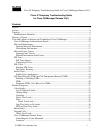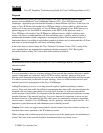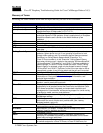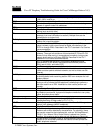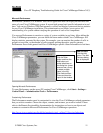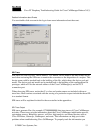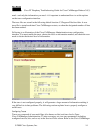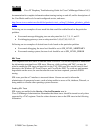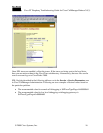
Cisco IP Telephony Troubleshooting Guide for Cisco CallManager Release 3.0(1)
© 2000 Cisco Systems, Inc. 9
Glossary
1.544 Mbps through the telephone-switching network, using AMI or
B8ZS coding. CAS is a Channel Associated Signaling interface.
T1/PRI
T1 is a digital WAN carrier facility, transmitting DS-1-formatted data at
1.544 Mbps through the telephone-switching network, using AMI or
B8ZS coding. PRI is Primary Rate Interface. Primary rate access
consists of a single 64-Kbps D channel plus 23 (T1) or 30 (E1) B
channels for voice or data.
TCP
Transmission Control Protocol. Connection-oriented transport layer
protocol that provides reliable full-duplex data transmission. TCP is part
of the TCP/IP protocol stack.
TFTP
Trivial File Transfer Protocol. Simplified version of FTP that allows files
to be transferred from one computer to another over a network.
Translation Pattern
Used to translate called (DNIS) and calling (ANI) numbers before
routing the call. For example, a call may come in to a set of numbers
919 392-3XXX that need to be translated to a set of Cisco IP Phones
that are in the range of 2XXX. Cisco CallManager has a Translation
Pattern set up for 919 392-3XXX. This pattern translates the leading
919 392-3 simply to 2 while leaving the remaining digits intact. Then the
call is routed to the appropriate Cisco IP Phone. Translation Patterns
are used only for true translations and should not be used for simple
digit stripping and prefixing.
UDP
User Datagram Protocol. Connectionless transport layer protocol in the
TCP/IP protocol stack. UDP is a simple protocol that exchanges
datagrams without acknowledgments or guaranteed delivery, requiring
that error processing and retransmission be handled by other protocols.
UDP is defined in RFC 768.
Voice Activation Detection
(Silence Suppression)
Voice Activation Detection allows a Cisco IP Phone to detect the
absence of audio and does not transmit packets over the network. The
sound quality may be slightly degraded but the connection may also
use less bandwidth. VAD/Silence Suppression is disabled by default.
VoIP
Voice over IP.
VLAN
virtual LAN. Group of devices on one or more LANs that are configured
(using management software) so that they can communicate as if they
were attached to the same wire, when in fact they are located on a
number of different LAN segments. Because VLANs are based on
logical instead of physical connections, they are extremely flexible.



